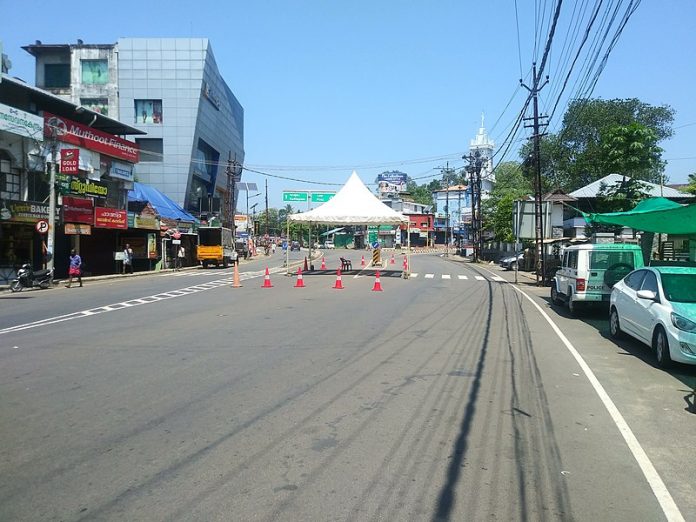As the series of lockdowns culminate into a farrago of hostile decisions and far-reaching socio-economic consequences the world is seeing an unprecedented change in affairs at the national and international levels. The region of South Asia is set to experience its worst economic performance in over 40 years due to the COVID-19 pandemic and the associated public health crisis which only positive affirmative political actions and transparent decision making can resolve. According to the latest World Bank study, regional growth is predicted to fall to a range of between 1.8 and 2.8 percent in 2020, down from 6.3 percent as projected 6 months ago.
In March, Sri Lanka’s election commissioner announced that the 2020 parliamentary election scheduled for late April, will be postponed indefinitely as a result of the pandemic. It has also banned the export of essential goods, including food staples while it continues to face major supply chain concerns at the domestic level. Sri Lanka’s new leadership is opportunistic and borderline authoritarian. It is leveraging the pandemic to censor public dissent. Sri Lanka received one of the largest emergency funding packages from the World Bank providing 128.6 million US dollars towards financing emergency health systems and pandemic response.
Pakistan was already in a period of economic austerity before the pandemic broke out due to a balance of payments crisis. The country’s Ministry of Planning has estimated that over 18.5 million people could face unemployment. The appropriation of healthcare systems across Pakistan is sharply divergent between the population-dense provinces such as Punjab and Sindh and the remote regions of Balochistan and Khyber-Pakhtunkwa.
Tourism is an integral industry in Nepal. However, due to the spread of COVID-19, tourism in Nepal will remain uncertain in the recent future. Similar to India, Nepal’s poor and migrant workers have suffered the most due to the cessation of economic activities during the pandemic. Its reliance on India-based supply chains makes Nepal’s economy more vulnerable to India’s strong-arming capabilities. It is also evident that their bilateral relations have deteriorated since the pandemic began.
As far as the Maldives is concerned, the level of public health preparedness remains underdeveloped. The only major densely populated region is its capital Malé, which is vulnerable to the pandemic due to threats from foreign tourists and visitors. Tourism not only accounts for nearly 28 percent of the GDP of Maldives but also around 60 percent of its foreign exchange accounts. Although the Maldives could easily stop tourism, the fact that this nation sees over 1 million tourists every year has not ruled out the spread of the pandemic.
Bhutan continues to rely on India for several imported goods which remain a concern for vulnerability due to the current pandemic. India has so far maintained a steady trade with Bhutan but there is not much guarantee that this shall be sustained for a prolonged period due to the global economic slowdown. A surge in COVID-19 infections will defeat the limited resources of the healthcare system prevalent in the nation. Bhutan had sealed its borders on March 23 and eve since this lockdown, every confirmed case of COVID-19 in Bhutan has been correlated to overseas travel, which suggests that community spread may be limited.
Afghanistan faces tremendous stress due to the pandemic with over 70 percent of its population living in rural locales that are far from accessible. There is not enough healthcare systems nor communication system in most of these regions. The country’s proximity to Iran, one of the world’s early COVID-19 hotspots, continues to remain a crucial challenge as well. The pandemic will also slow down the already pedestrian peace process in the region making the region politically unstable. Rapid institutional and scientific development is required and efficient utilization of foreign assistance from major funding sources such as the International Monetary Fund and the World Bank is necessary to mitigate the risks imminent from the pandemic at large.
In Bangladesh, a major reshuffling of major sectors is necessary to tackle the economic downfall of the nation due to the pandemic. It is reported that one out of every four workers in the manufacturing sector has lost their source of income. The loss of revenue in this respect has been estimated at around 3 billion US dollars. Bangladeshis living in poverty continue to suffer the worst of the pandemic, similar to the situation in other South Asian nations. A severe public health crisis can arise among Rohingya refugees currently dwelling in the Cox Bazaar region and other refugee camps. They will fear being ostracised and segregated and may not be forthcoming toward testing for the virus. To support the national economy, the government has announced a stimulus package equivalent to 2.5 percent of its GDP totaling to around 8 billion US dollars.
India’s issues stem from implementation failures rather than due to a lack of capacity. The rapid implementation of a nation-wide lockdown resulted in panic among the public as they struggled to procure essential goods while law enforcement agencies became regressive in the supporting system of lockdowns resulting in protests and scattered public disruptions across the country. India’s COVID-19 testing rates continue to remain far below the required. A major section of the poverty-stricken Indian population is left without employment and income. Many migrant workers are unable to find shelter or food. Even now India seems to remain lackadaisical about the effects of the pandemic although the number of infections has risen considerably since the decision to lift the series of lockdowns was taken.
The lower-income sections of the South Asian population have been affected the most. They have almost no access to health care and often live in unclean environments that are not easy to disinfect. Many of such people will also be unable to practice social distancing since there is a common lack of affordable shelter, especially in urban areas. They are more likely to have lost their source of income and are more vulnerable to a rise in food prices. South Asia finds itself caught in a perfect storm that it hadn’t prepared for. Tourism has dried up, rate of unemployment has risen, manufacturing and supply chains have degraded, demand for clothing has collapsed, international capital is being withdrawn from the markets, consumer, as well as investor confidence, has seen a sharp decline and the regular inflow of remittances are being considerably disrupted. What is worse the fact that there is no sign of recovery even as we closing in on the end of the lockdown era in governance.
The views and opinions expressed in this article are those of the author.

The author is a postgraduate student at the Department of International Relations at Jadavpur University, Kolkata, India. He has worked under the UN Online Volunteering banner for research-related projects in organizations like the CAMAAY, GLOWA, UNICEF Nigeria, IDMC, UNITAR etc.


